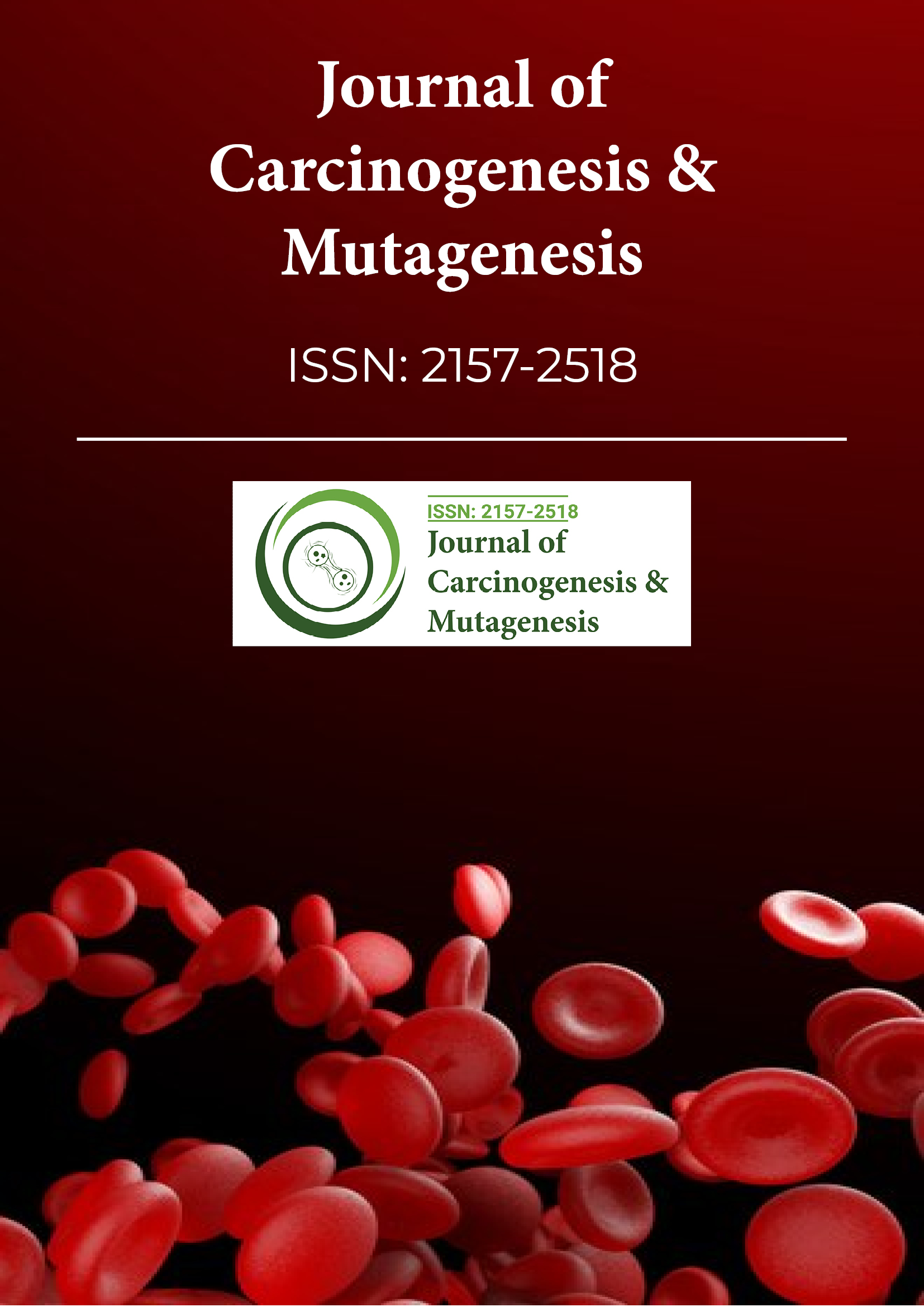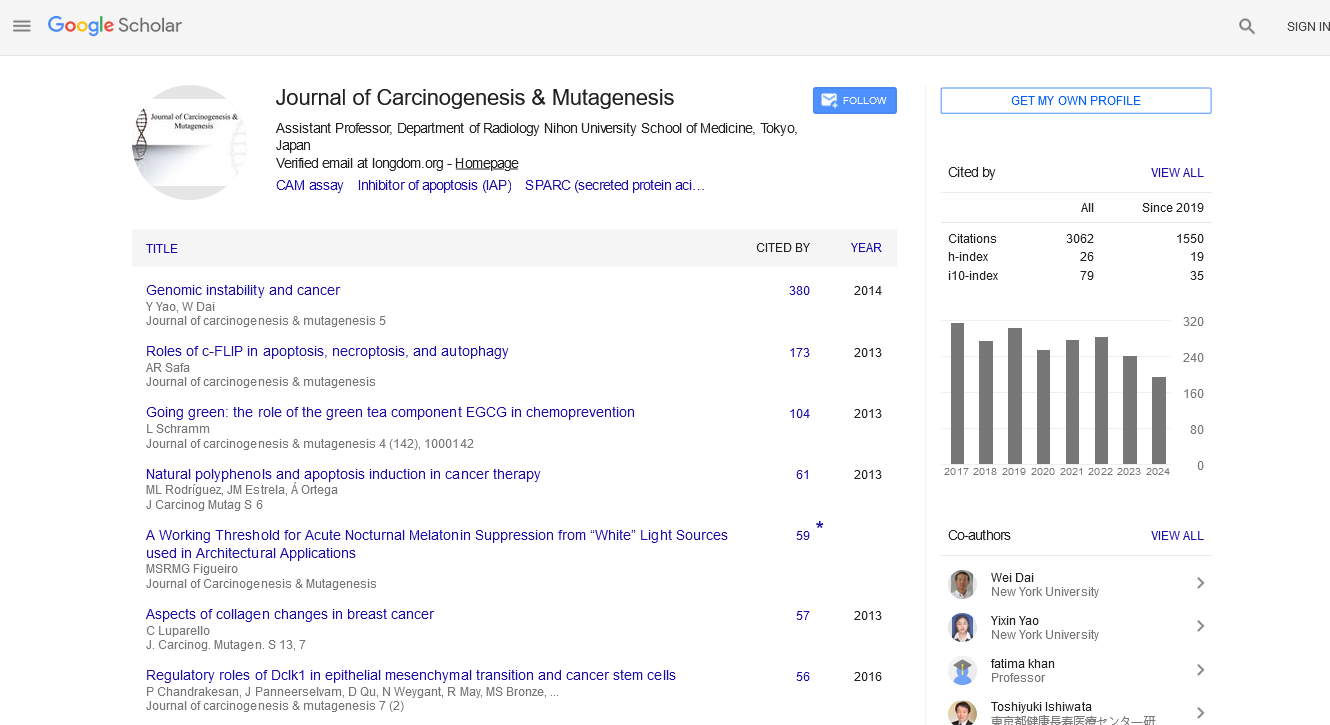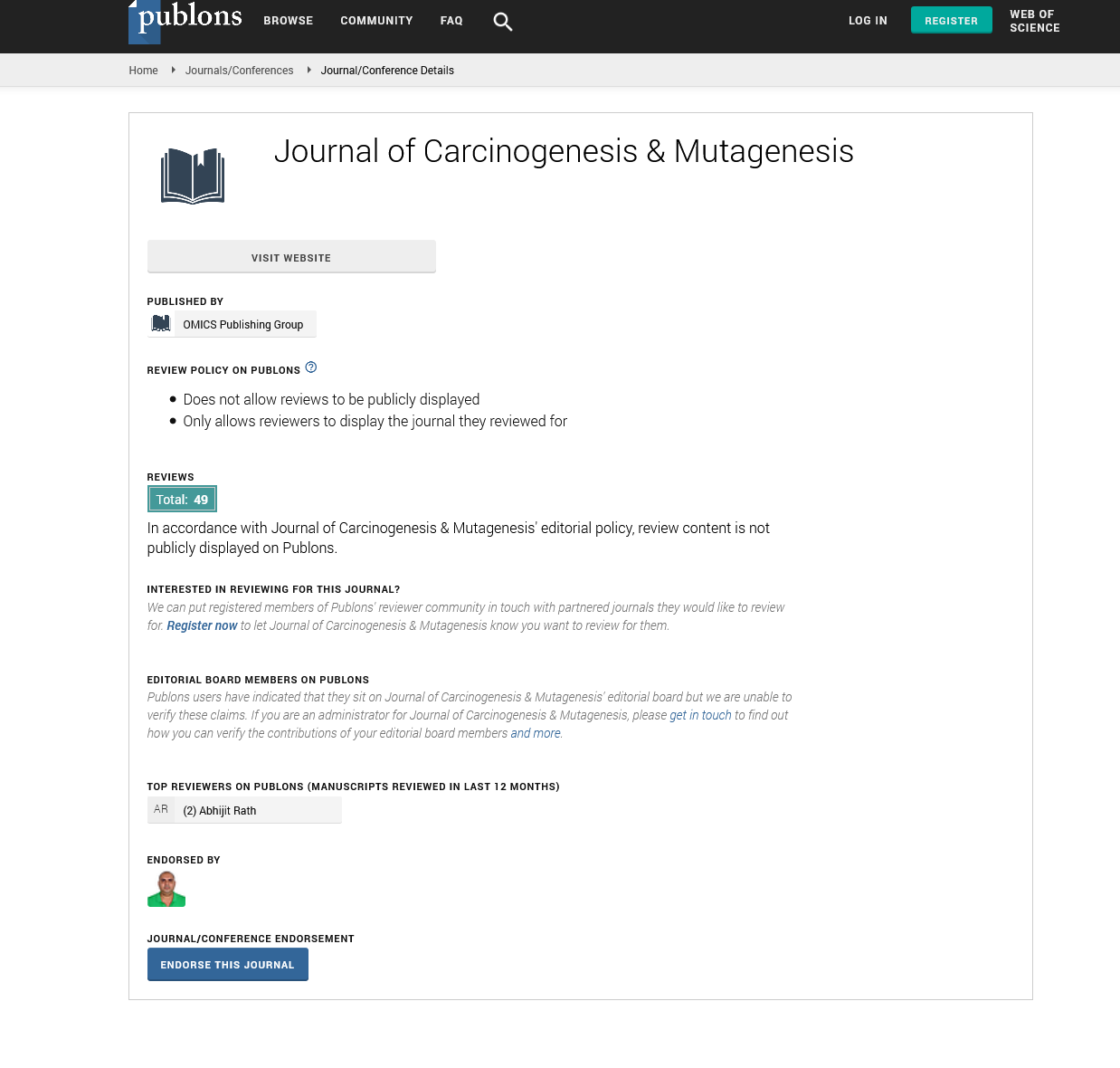Indexed In
- Open J Gate
- Genamics JournalSeek
- JournalTOCs
- Ulrich's Periodicals Directory
- RefSeek
- Hamdard University
- EBSCO A-Z
- OCLC- WorldCat
- Publons
- Geneva Foundation for Medical Education and Research
- Euro Pub
- Google Scholar
Useful Links
Share This Page
Journal Flyer

Open Access Journals
- Agri and Aquaculture
- Biochemistry
- Bioinformatics & Systems Biology
- Business & Management
- Chemistry
- Clinical Sciences
- Engineering
- Food & Nutrition
- General Science
- Genetics & Molecular Biology
- Immunology & Microbiology
- Medical Sciences
- Neuroscience & Psychology
- Nursing & Health Care
- Pharmaceutical Sciences
Commentary - (2022) Volume 13, Issue 3
The Feature of p53 in Programmed Cell Death and Human Cancers
Mohammad Fehghani*Received: 02-May-2022, Manuscript No. JCM-22-17046; Editor assigned: 04-May-2022, Pre QC No. JCM-22-17046(PQ); Reviewed: 18-May-2022, QC No. JCM-22-17046; Revised: 25-May-2022, Manuscript No. JCM-22-17046(R); Published: 03-Jun-2022, DOI: 10.35248/2157-2518.22.13.388
Description
In the life of a multicellular organism, cell death is inevitable. Apoptosis and necrosis are the two major types of cell death, with the former being the most prevalent. Apoptosis is also known as planned cell death since it is the outcome of finely regulated, genetically driven, self-orchestrated processes (PCD). A crucial self-destruction process in cell formation and proliferation that allows a cell to maintain homeostasis is programmed cell death. It has pathological ramifications as well. Apoptosis, autophagy, and programmed necrosis are the three main types of programmed cell death, each of which contributes to cancer progression in different ways. The balance between cell division and cell death is disrupted in cancer, and cells that should have perished won't receive the impulses to provide it. The issue can develop at any point during the apoptotic process. Down regulation of the tumor suppressor gene p53, for example, leads to decreased apoptosis and increased tumor growth and progression, and inactivation of p53, independent of cause, has been related to numerous human malignancies. However, because apoptosis is a double-edged sword, it may be both a problem and a solution, as many people are currently looking for new medications that target various components of apoptosis. As a result, apoptosis is crucial in both carcinogenesis and cancer treatment.
Although p53 is the most often altered gene in human cancers, it is unclear how it prevents tumours from forming. Humans who are heterozygous for p53 loss of function mutations (Li– Fraumeni syndrome) and mice that have one or both p53 alleles deleted develop malignancies in a variety of tissues at a young age. It can cause cell cycle arrest by transcriptionally activating the p21 cyclin kinase inhibitor gene, and it can cause apoptosis by transcriptionally activating pro-apoptotic genes, particularly for the BH3-only protein PUMA. It's uncertain whether inducing apoptosis or cell cycle arrest is necessary for p53's tumour suppressor action. Despite the fact that lymphoid cells in bcl-2 transgenic mice are just as resistant to apoptosis caused by ionizing radiation and DNA mutagens as those in p53 mutant mice, the bcl-2 transgenics have a much lower lymphoma rate. Similarly, mice lacking the PUMA gene or both Bax and Bak genes do not develop cancer at the same rate as p53 null animals, despite the fact that p53 requires PUMA to trigger apoptosis in response to DNA damage, and all p53-mediated apoptosis is assumed to require Bax and Bak.
This suggests that p53's propensity to initiate apoptosis has little bearing on its tumour suppressor genes effectiveness. On the other hand, carcinoma incidence isn't significantly higher in p21- deficient animals, suggesting that p53 activity isn't particularly relevant. These findings show that p53's ability to operate as a tumour suppressor may be explained by an extra action. It has long been advocated that p53 can work independently of transcriptional control to bind to and block Bcl-x at the mitochondria, causing apoptosis. Because p53 must stimulate the PUMA gene in response to DNA damage, and PUMA is essential for p53-mediated apoptosis, this alternative p53 activity does not appear to constitute a key element of p53's proapoptotic activity, and hence is unlikely to be important for p53- mediated tumor suppression.
Since p53 mutations are found in more than half of all human malignancies, mutational inactivation is a primary biological mechanism underlying p53 failure. Chemo-resistant phenotype can be seen in cancers with the p53 mutation. Although the intracellular balance between wild-type and mutant p53 expression levels may be a key driver of cell destiny in response to DNA damage, mutant p53 is a dominant-negative inhibitor of wild-type p53 and has a longer half-life than wildtype p53. As a result, new ways to reactivate mutant p53 are needed to provide hints on how to effectively treat malignancies with p53 mutations.
Citation: Fehghani M (2022) The Feature of p53 in Programmed Cell Death and Human Cancers J Carcinog Mutagen. 13:388.
Copyright: © 2022 Fehghani M. This is an open-access article distributed under the terms of the Creative Commons Attribution License, which permits unrestricted use, distribution, and reproduction in any medium, provided the original author and source are credited.


